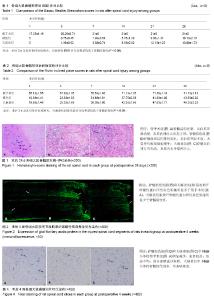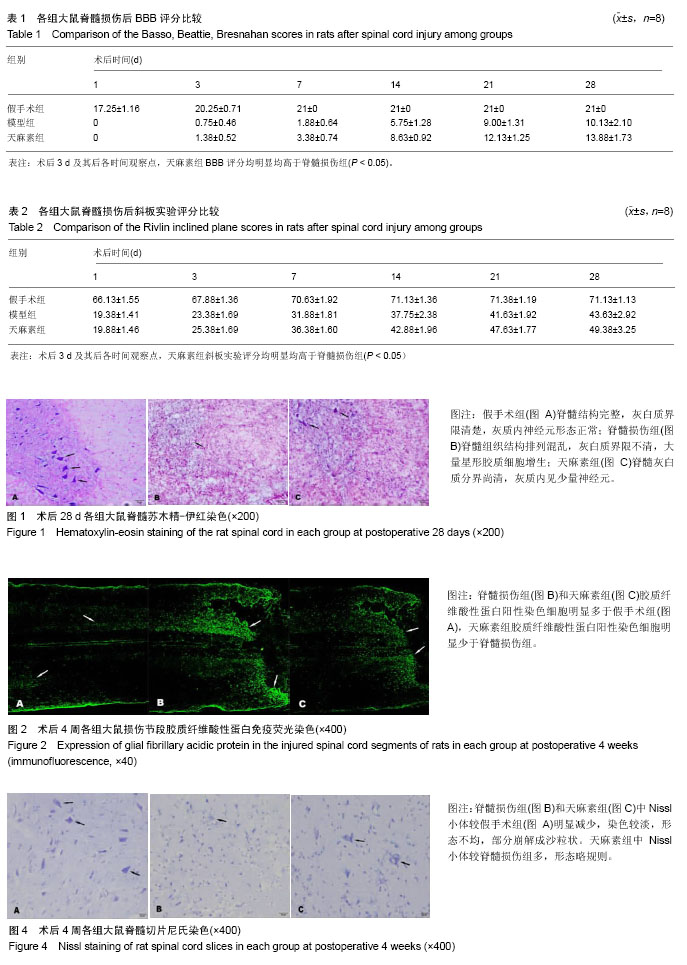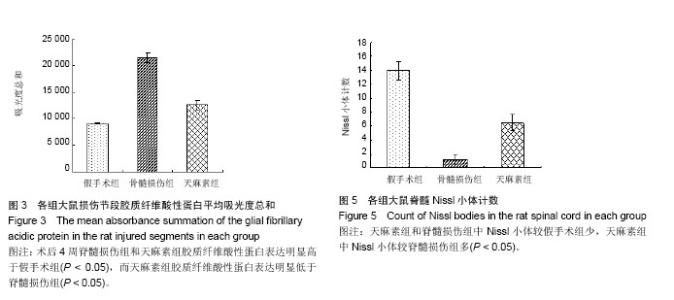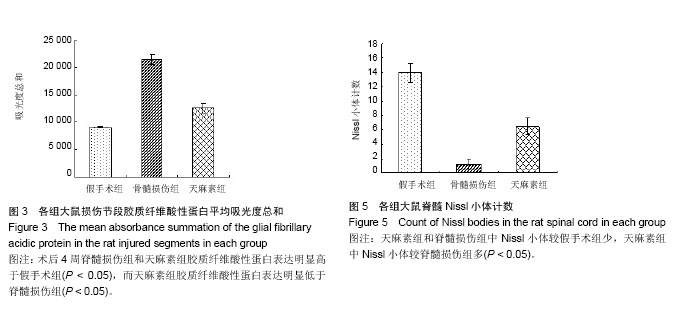| [1] Singh A,Tetreault L,Kalsi-Ryan S,et al.Global prevalence and incidence of traumatic spinal cord injury.Clin Epidemiol.2014; 23(6):309-331.[2] Yue C,James S,Lee L,et al.Household Income and Subjective Well-Being after Spinal Cord Injury: A Longitudinal Study.Top Spinal Cord Inj Rehabil.2014;20(1):40-47.[3] Silva NA,Sousa N,Reis RL,et al. From basics to clinical: a comprehensive review on spinal cord injury.Prog Neurobiol. 2014;114(3):25–57.[4] Zhu H,Dai P,Zhang W,et al. Enzymic synthesis of gastrodin through microbial transformation and purification of gastrodin biosynthesis enzyme.Biol Pharm Bull. 2010;33(10):1680-1684. [5] Zhan HD,Zhou HY,Sui YP,et al.The rhizome of Gastrodia elata Blume - An ethnopharmacological review.J Ethnopharmacol. 2016;189(8):361-385. [6] Kumar H,Kim IS,More SV,et al.Gastrodin protects apoptotic dopaminergic neurons in a toxin-induced Parkinson's disease model.Evid Based Complement Alternat Med. 2013;2013:514095.[7] Du F,Wang X,Shang B,et al.Diao Y.Gastrodin ameliorates spinal cord injury via antioxidant and anti-inflammatory effects. Acta Biochim Pol.2016;63(3):589-593. [8] Jain NB,Ayers GD,Peterson EN,et al.Traumatic spinal cord injury in the United States, 1993-2012.JAMA. 2015;313(22): 2236-2243.[9] Chamberlain JD,Meier S,Mader L,et al.Mortality and longevity after a spinal cord injury: systematic review and meta-analysis. Neuroepidemiology.2015;44(3):182-198.[10] Wang F,Zhang J,Tang H,et al.Characteristics and rehabilitation for patients with spinal cord stab injury.J Phys Ther Sci.2015;27(12):3671-3673.[11] Snyder EY,Teng YD.Stem cells and spinal cord repair.N Engl J Med.2012;366(20):1940-1942.[12] Jones ZB,Ren Y.Sphingolipids in spinal cord injury.Int J Physiol Pathophysiol Pharmacol.2016;8(2):52-69.[13] Vogelaar CF.Extrinsic and intrinsic mechanisms of axon regeneration:the need for spinal cord injury treatment strategies to address bothV.Neural Regen Res.2016;11(4):572-574.[14] Yu WY, He DW.Current trends in spinal cord injury repair.Eur Rev Med Pharmacol Sci.2015;19(18):3340-3344.[15] Lee B,Sur B,Yeom M,et al. Gastrodin reversed the traumatic stress-induced depressed-like symptoms in rats.J Nat Med. 2016;70(4):749-59.[16] Song C, Fang S, Lv G, et al.Gastrodin promotes the secretion of brain-derived neurotrophic factor in the injured spinal cord.Neural Regen Res.2013;8(15):1383-1389.[17] Fang H,Zhang JC,Yang M,et al.Perfusion of gastrodin in abdominal aorta for alleviating spinal cord ischemia reperfusion injury.Asian Pac J Trop Med.2016;9(7):688-693.[18] Zhang R,Peng Z,Wang H,et al.Gastrodin ameliorates depressive-like behaviors and up-regulates the expression of BDNF in the hippocampus and hippocampal-derived astrocyte of rats.Neurochem Res.2014;39(1):172-179.[19] Hu Y,Li C,Shen W,et al. Gastrodin alleviates memory deficits and reduces neuropathology in a mouse model of Alzheimer's disease.Neuropathology.2014;34(4):370-377.[20] Moonen G,Satkunendrarajah K,Wilcox JT,et al.A New Acute Impact-Compression Lumbar Spinal Cord Injury Model in the Rodent.J Neurotrauma.2016;33(3):278-289. [21] Xu J,Huang G,Zhang K, et al.Nrf2 Activation in Astrocytes Contributes to Spinal Cord Ischemic Tolerance Induced by Hyperbaric Oxygen Preconditioning.J Neurotrauma.2014; 31(15):1343-1353.[22] Eugene A,Hari S.Not Just the Brain: Methamphetamine Disrupts Blood-Spinal Cord Barrier and Induces Acute Glial Activation and Structural Damage of Spinal Cord Cells.CNS Neurol Disord Drug Targets.2015;14(2):282-294. |



